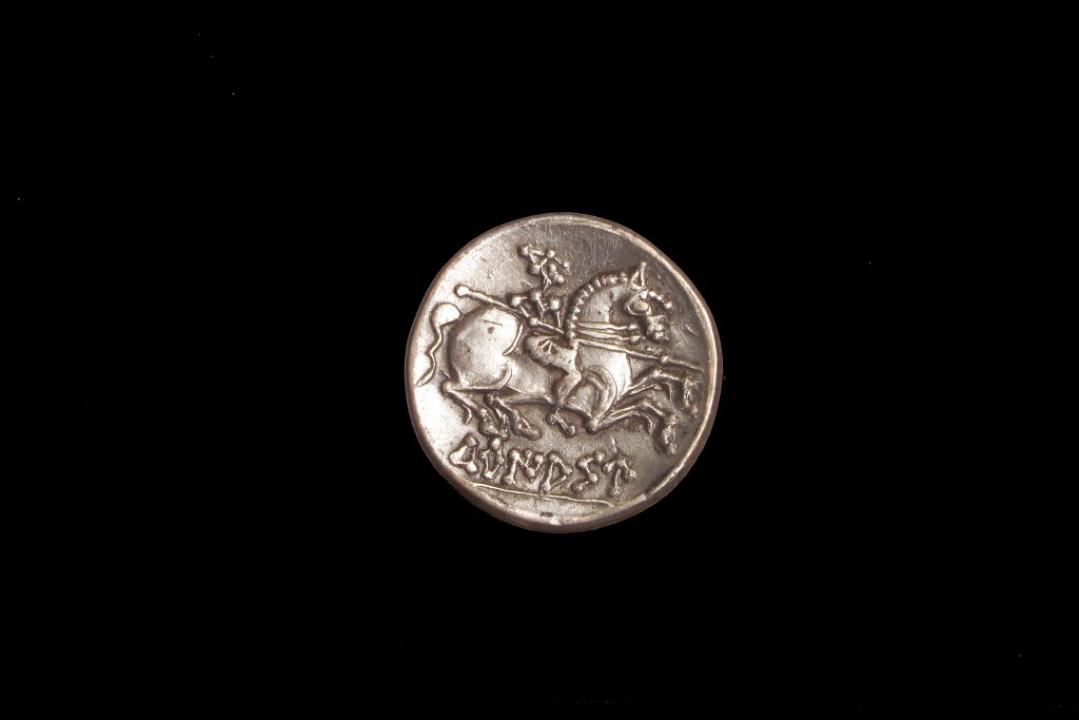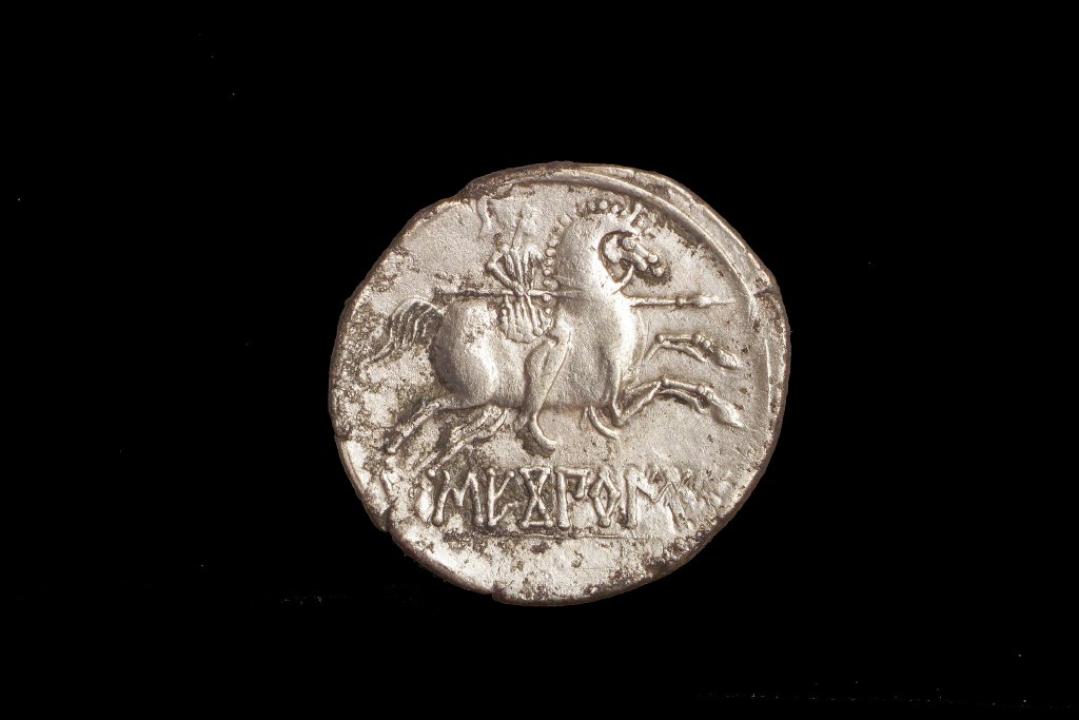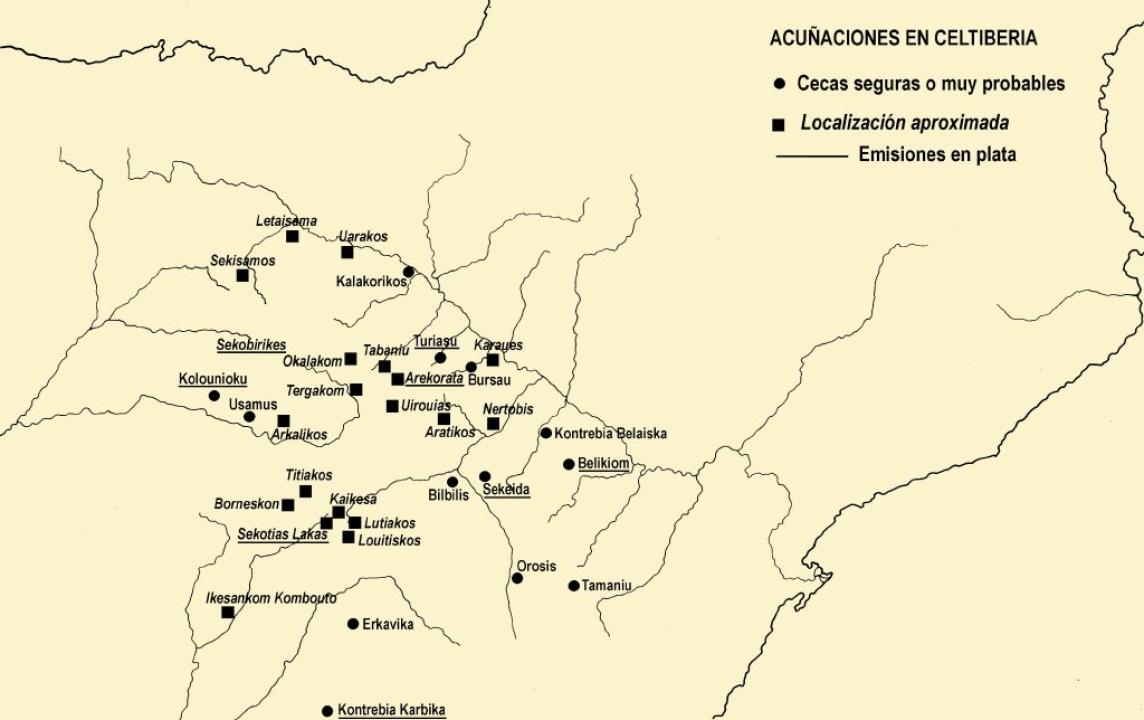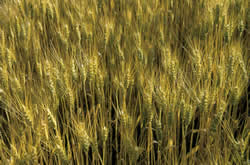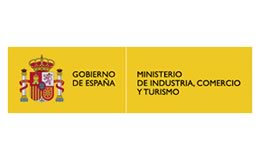

The appearance of the currency in Celtiberia occurred at mid-second century BC, in a moment late, as had been known for more than four centuries in the Eastern Mediterranean
The first mints or workshops emerged as a result monetary policy strategy of the Roman Celtiberian benefit some cities over others in terms of their political interests, therefore the responsibility of issuance falls on the city, which gives the necessary assurance, flaunting their power with the inscription of his name in the blank disc or metal. Not all cities Celtiberian issued currency, but that did not could use the neighboring cities to allow circulation through its territory.
The use of money did not mean the abandonment of the exchange (use of goods or products with value supported by all), and that the currency was introduced initially for very specific purposes such as payment of soldiers to the military and certain commercial transactions which involved only certain sections of the population.
Celtiberian coins, as heirs of the Iberian and these in turn from the Greek, will reflect this influence not only in its iconography, but also take their pesos, writing, and the same metals: silver and copper.
Silver coins come with a high degree of purity, up to 95%, especially in parts of the older releases, but in times of crisis it is easy to find the coins denominated lined intentionally adulterated, as a system of devaluation can reach values of 9.73% silver and the rest copper. Bronze coins ternary alloys show a very significant presence of copper and less than lead and tin, with varying proportions of each of the three metals, in some cases to use pure copper blanks (in Turiasu, Ekualacos, Titiakos , Sekobirikes).
The measuring system and its nomenclature is in accordance with Roman pattern, so that the Celts used the silver denarius, weighing slightly less than 4 g, and its half the quinary exceptionally (only Turiasu). Copper or brass are outstanding securities or unit as, half or semis, fourth or cuadrans, triens third, and sixth or Sextans.
Iconography
The Celts built their iconographic repertoire currencies used by the Iberians, influenced by the Greeks, but increasingly adapted to indigenous aesthetics: the image or male bust on the obverse and the rider with different attributes on the back. The bust may appear adorned with the torque, or wearing the sagum (mantle that the Celts picked up on the right shoulder with a fibula), but also with helmets, headsets or winners (in Sekobirikes, Turiasu and Bílbilis) shows of the association with Greek prototypes, Carthaginians and Romans.
The rider on horseback carrying a spear is the most common iconography on the back, showing only limited modifications, except for the replacement of the spear by another object: palm, banner, or turning back the right arm to lift other types weapons (double ax, sickle, spear or banner).
The type of dividers and provides added symbols representing various animals, like horses and appears exceptionally rooster (in the semis of Arekoratas), boar (Sekaisa) and the Lion (Sekobirikes). Also, the dolphin, or objects such as palm, star or crescent (Turiasu and Bílbilis) associated with the main types of both the front and back.
Money and Society
The messages of currencies contributed to the legitimization of power elites of the city-state that structured Celtiberian territory. The currency will be handled by the soldiers and mercenaries whose soldiers are paid in cash bronze until the mid second century BC, as shown by the findings of the camp of the Watchtower Nobilior Renieblas, near Numancia. But after 153 BCE being waged in dinars.
Also handled money makers, public administration officials and a portion of the population linked to the elite, and the artisans. The Roman conquerors require citizens to pay taxes in the form of grain, textiles and silver. However, the bulk of the population received money through the payment of its work and the sale of agricultural products to the military, local elites and artists and artisans.


